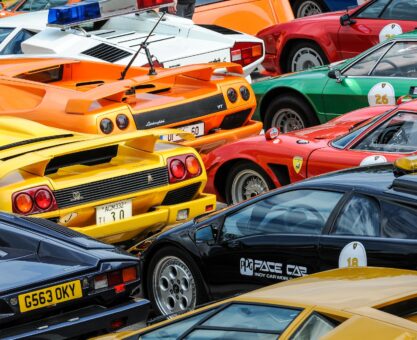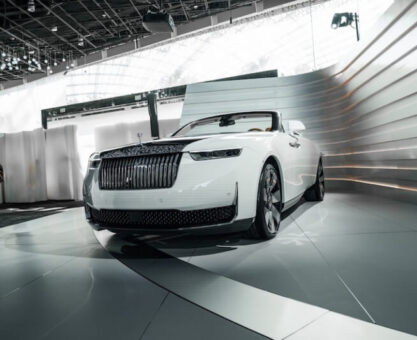
Since 1925, the Rolls-Royce Phantom has ferried kings and queens, rock stars and revolutionaries, diplomats and dreamers. It has graced red carpets, wartime strategy rooms, royal wedding processions, and recording studios lit by incense and creative fire. And through it all, Phantom has often led the motorcade.
As Rolls-Royce celebrates a full century of Phantom, this moment is about recognising the weight a nameplate can carry, and the stories that only a car like this could collect along the way.

Few understand symbolism better than military generals. Field Marshal Bernard Law Montgomery, famously austere, made one grand concession: a pair of Phantom IIIs. One for personal use, and another to drive Winston Churchill, Eisenhower, and even King George VI to high-stakes planning sessions in the lead-up to D-Day.

In 1948, just after marrying Princess Elizabeth, the Duke of Edinburgh requested a Phantom for their joint use. Thus, Phantom IV chassis number one was born, later nicknamed the Maharajah of Nabha. Today, it still serves the Royal Household, an emblem of continuity in a rapidly changing world.

Phantoms have since been woven into the royal tapestry: from the Silver Jubilee Phantom VI, gifted to Queen Elizabeth II in 1977, to the Phantom that quietly glided the Duchess of Cambridge to Westminster Abbey in 2011.
Even beyond Britain, Phantom played a starring role. In 1966, a Phantom V carried Sheikh Zayed Bin Sultan Al Nahyan, founding father of the UAE, to his inauguration. A few years later, it delivered Britain’s ambassador to the signing ceremony that birthed the nation.

Of course, not every Phantom was destined for velvet ropes and palace gates. Some, like the one owned by John Lennon, became canvases for rebellion.
Initially all black, Lennon’s Phantom V was a nightclub on wheels, complete with blackout windows. But in 1967, it transformed into a psychedelic riot of yellows and florals, prompting one furious Englishwoman to whack it with her umbrella, shouting, “How dare you do that to a Rolls-Royce!” Lennon, naturally, was amused.
Phantom’s allure didn’t stop at Buckingham Palace. Fred Astaire, Greta Garbo, Jack Warner, and even James Bond’s villains have all had their moment behind (or inside) the wheel.

In 1964’s Goldfinger, gold was smuggled inside a Phantom III. Sixty years later, Rolls-Royce paid homage with a one-off Phantom Goldfinger, complete with bespoke coachwork and playful nods to the film. Art imitating art imitating espionage.
That same year, The Yellow Rolls-Royce premiered with a glittering cast and a 1931 Phantom II.
Elvis Presley, never one to do things by halves, bought a Phantom V in 1963. He customised it with a microphone, a writing kit, and had it resprayed after his mother’s chickens pecked the original finish. The car would later inspire Leonard Cohen’s offbeat ballad, Elvis’s Rolls-Royce.

Fast forward to the 2000s, and Phantom VII arrived just in time for the rise of self-made millionaires, social media moguls, and the cult of personality. No longer just a badge of lineage, Phantom became a canvas for individualism. Even Olympics appearances, as in London 2012, where Phantom Coupés stole the closing ceremony spotlight.
From the Spirit of Ecstasy to digital OLED light signatures, Phantom has evolved without ever chasing trends. Every generation has added something new to its mythos. Every owner has rewritten a chapter.

“Phantom is a cultural phenomenon, a canvas for personal expression, transformed through Bespoke craftsmanship into a moving work of art,” Chris Brownridge, Chief Executive of Rolls-Royce Motor Cars.
At 100 years young, Phantom is not slowing down. It is, instead, reminding the world what greatness truly looks like.
Read more content at Burnpavement, or check out our latest videos on YouTube and on TikTok!














